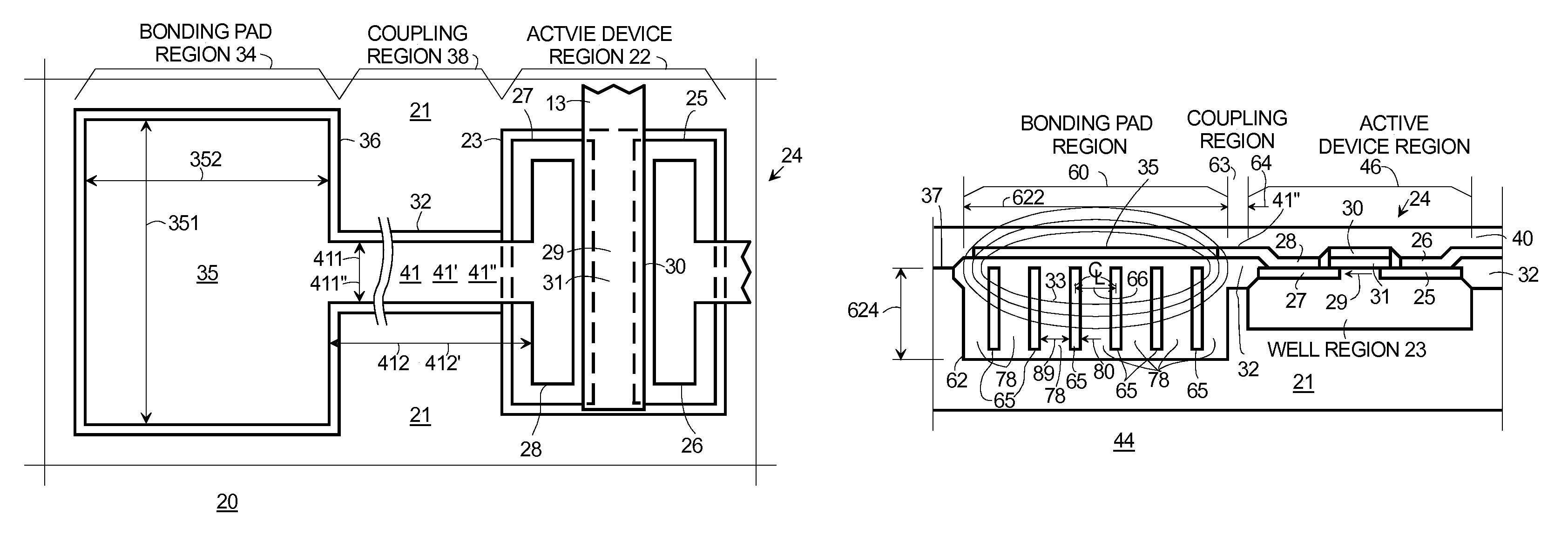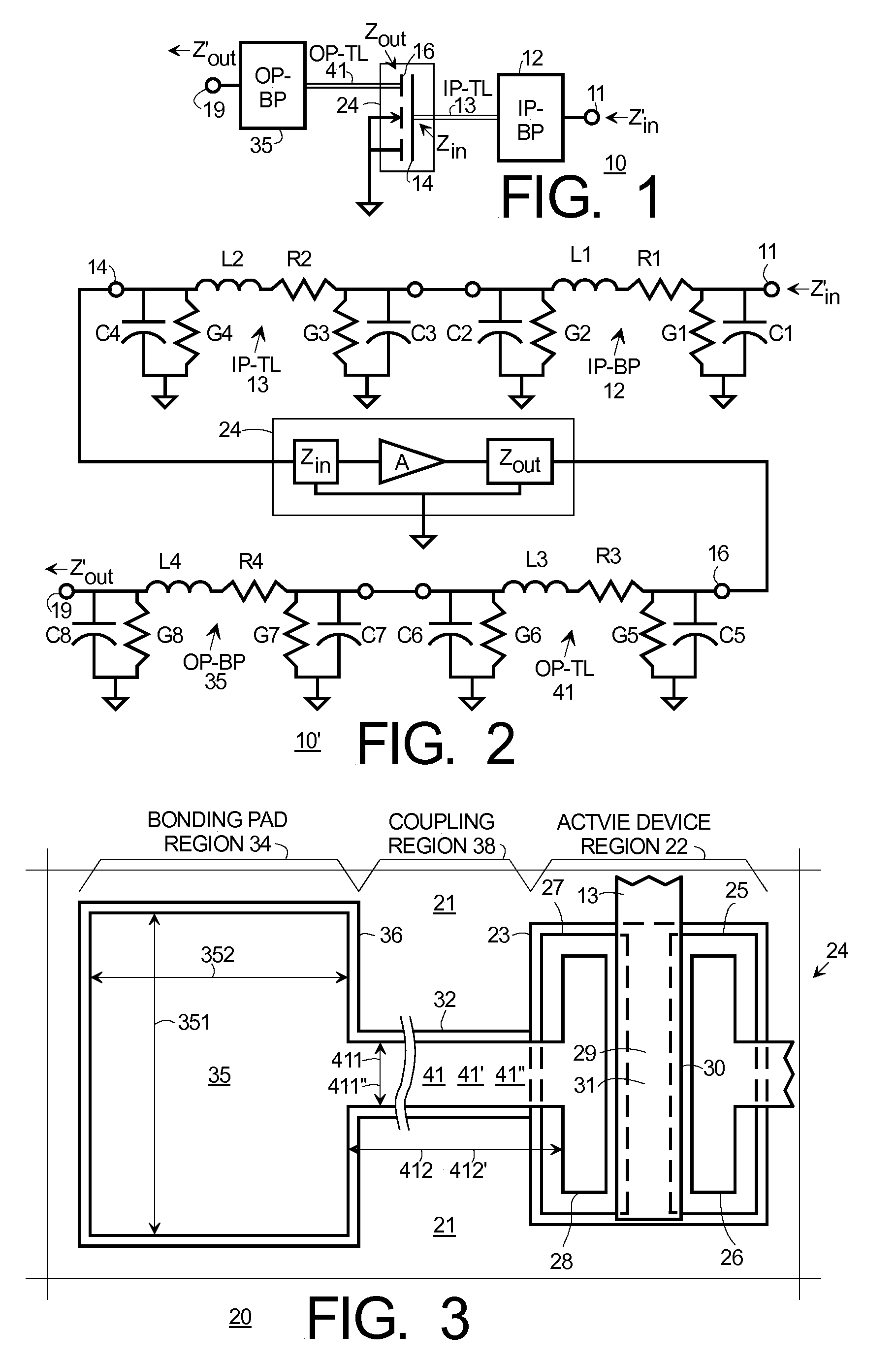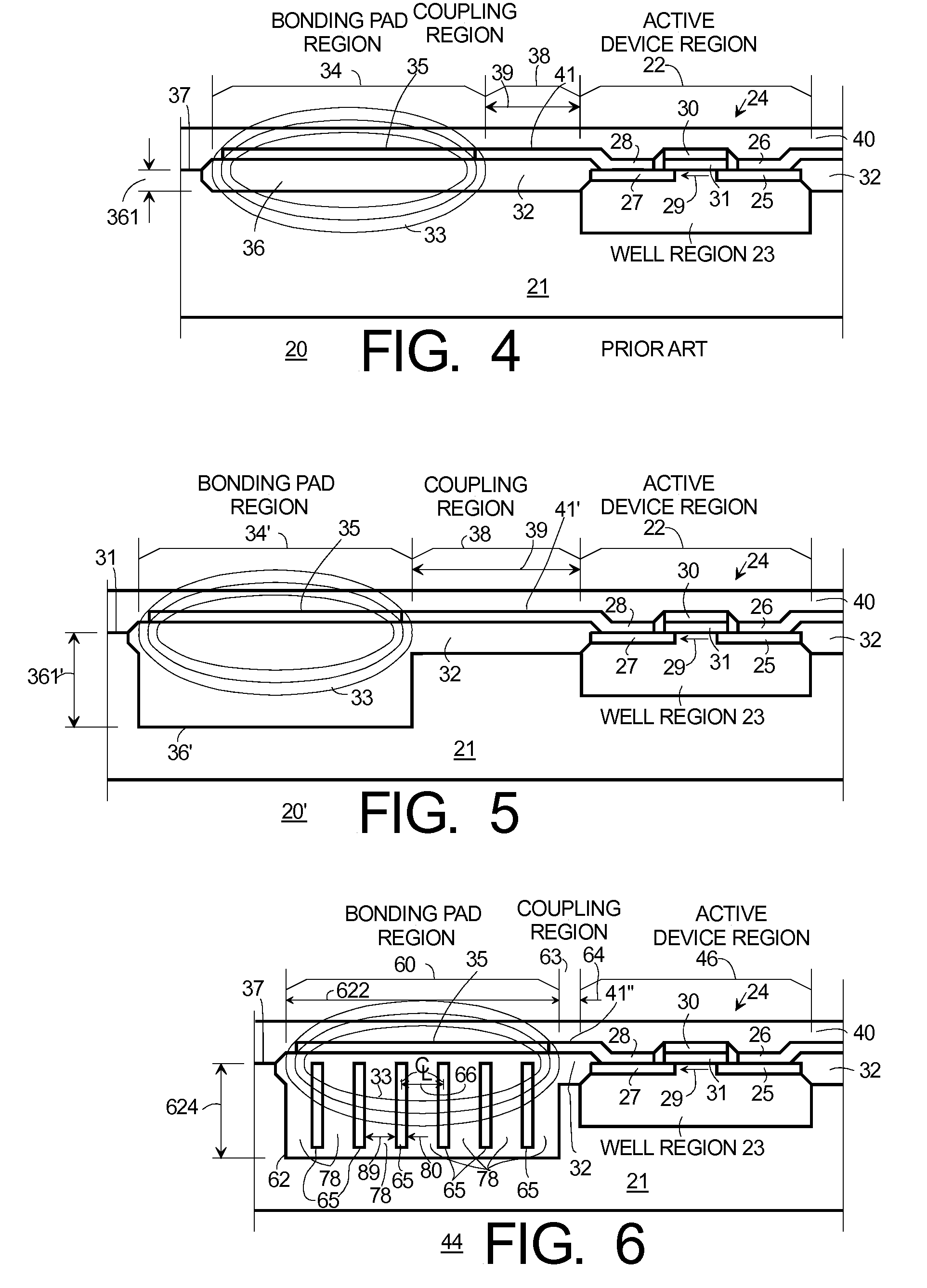Methods for forming an RF device with trench under bond pad feature
a technology of rf device and bond pad, which is applied in the direction of semiconductor devices, semiconductor/solid-state device details, electrical apparatus, etc., can solve the problems of degrading device and ic performance, difficult or impossible to provide the desired impedance matching at the input-output terminal of such devices, and achieving convenient planarization polish stop and/or etch stop
- Summary
- Abstract
- Description
- Claims
- Application Information
AI Technical Summary
Problems solved by technology
Method used
Image
Examples
first embodiment
[0046] there is provided an electronic element (44, 44′, 44″), comprising, a semiconductor (SC) substrate (45) having a first thermal expansion coefficient (TEC) and an active device region (46) and a bonding pad region (60), a bonding pad (35) located in the bonding pad region (60), a composite dielectric region (62, 62′, 62″) located in the bonding pad region (60) underlying the bonding pad (35) and comprising an insulating material (78, 78′, 78″) having a second TEC, inclusions (65, 65′, 65″) of a further material (82, 82″; 83, 83″) within the composite dielectric region (62, 62′, 62″), the further material (82, 82″; 83, 83″) having a third TEC less than the second TEC, wherein the inclusions (65, 65′, 65″) are electrically isolated from the substrate (45) and the bonding pad (35), and an active device (24) located in the active device region (46) and proximate the composite dielectric region (62, 62′, 62″), having a first terminal electrically coupled to the bonding pad (35) by ...
second embodiment
[0047] there is provided a method (115-131) for forming an electronic element (44, 44′, 44″) incorporating a composite dielectric region (CDR) (62, 62′, 62″) under a bonding pad (35) coupled to an active device (24), comprising, providing (115, 124, 127) a semiconductor substrate (45) of a first material having a first thermal expansion coefficient (TEC) and having a first surface (57), wherein the substrate (45) has therein a first region (46) adapted to receive the active device (24) and a second region (60) adapted to receive the bonding pad (35), forming (115, 124, 127) a mask (72) on the second region (60), the mask having spaced-apart openings (73, 73′, 73″) of a first width (75, 75′, 75″), etching (116, 124, 127) space-apart trenches (74, 74′, 74″) of substantially the first width (75, 75′, 75″) to a first depth (741, 741″) in the substrate (45), leaving columns (76, 76′, 76″) of substantially undisturbed substrate (45) material between the trenches (74, 74′, 74″) and other p...
third embodiment
[0048] there is provided an electronic device (44, 44′, 44″) comprising, a semiconductor substrate (45) having therein a bonding pad region (60) and an active device region (46), a bonding pad (35) electrically isolated from the substrate (45), a composite dielectric region (62, 62′, 62″) on the substrate (45) in the bonding pad region (60) and underlying the bonding pad (35), wherein the composite dielectric region (62, 62′, 62″) comprises insulating dielectric regions (78, 78′, 78″, 85, 68, 70, 86) and non-single crystal semiconductor inclusion regions (65, 65′, 65″), the inclusion regions (65, 65′, 65″) being electrically isolated from the bonding pad (35) and the substrate (45) by portions of the insulating dielectric regions (78, 78′, 78″, 85, 68, 70, 86), and an active device (24) in the active device region (46) electrically coupled to the bonding pad (35) by an interconnection (41, 41′, 41″). According to a further embodiment, the substrate (45) has a resistivity less than a...
PUM
 Login to View More
Login to View More Abstract
Description
Claims
Application Information
 Login to View More
Login to View More - R&D
- Intellectual Property
- Life Sciences
- Materials
- Tech Scout
- Unparalleled Data Quality
- Higher Quality Content
- 60% Fewer Hallucinations
Browse by: Latest US Patents, China's latest patents, Technical Efficacy Thesaurus, Application Domain, Technology Topic, Popular Technical Reports.
© 2025 PatSnap. All rights reserved.Legal|Privacy policy|Modern Slavery Act Transparency Statement|Sitemap|About US| Contact US: help@patsnap.com



